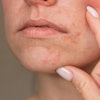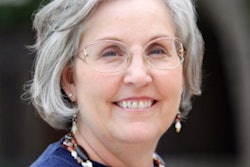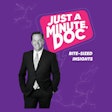
SAN FRANCISCO - Oral health policy for adults in long-term care facilities is a mess, according to Elizabeth Mertz, PhD, who presented her research on the dental care gap at this week's International Association of Gerontology and Geriatrics (IAGG) 2017 World Congress.
Mertz, a dental sociologist and associate professor at the University of California, San Francisco School of Dentistry (UCSF), discussed the challenges older adults face when trying to access dental care, as well as the ways four states are trying to solve those challenges. Her key takeaway was that, without sweeping changes to address the dental divide and unify state and federal policy, most efforts will only have a limited effect.
"Oral health is not covered, and we don't know what we should cover, so it's all a mess," she said. "Structural changes are needed to address it."
Oral health challenges for older adults
Individuals living in long-term care facilities have worse oral health than individuals living independently. This is partly because dental benefits for seniors are often inadequate or nonexistent.
“It's all a mess. Structural changes are needed to address it.”
Seniors typically pay for dental care in four ways, Mertz said. The first, and one of the most common, is Medicaid, which covers about two-thirds of skilled nursing facility residents. However, in many states, oral healthcare is not part of Medicaid.
Medicare and Medicare Advantage dental plans also are options for older adults. Although regular Medicare does not cover dental services, some codes can be applicable to dentistry, such as fees for sedation and remote screening.
Finally, some older adults self-pay for private care, but further analysis is limited because data on who pays for private dental care out of pocket is lacking. In addition, getting to a private dentist may be a burden to those who are in long-term care, since the system was designed for a different population.
Compounding the problem of paying for dental care, dental providers also have limited geriatric training, and there are no pipeline programs to train dentists to work with this population, Mertz noted. For instance, the geriatric dentistry fellowships were defunded by the U.S. Health Resources and Services Administration in 2015, and geriatric dentistry is not a specialty recognized by the ADA. As a result, those who go into geriatric dentistry do so because it's their passion.
"It's driven by personal desire, which is great, but it's not a sustainable system model," Mertz said.
Experimental care delivery systems
To help address these issues, Mertz looked at experimental care delivery systems in four states with very different policy environments: California, Florida, Minnesota, and North Carolina. She and her UCSF colleague, Cynthia Wides, reviewed the literature, conducted interviews, and analyzed dental coverage structures to find out how care was organized.
They found that there is no standard when it comes to providing dental care for those in long-term care facilities. This can be at least partly attributed to the fact that there is no standardized national oral health policy, and state policies can vary widely, from the use of dental therapists or expanded function hygienists to whether or not Medicaid includes adult dental benefits.
As a result, each of the four states came up with their own way to address oral healthcare issues based on the policy environment activists and policymakers were working within:
- California uses teledentistry in combination with registered dental hygienists in alternative practice (RDHAPs), who can practice outside of the dental office. These hygienists, in particular, have significantly expanded access to care for long-term care residents, Mertz noted.
- Florida lacks dental Medicaid benefits for older adults, so long-term care facilities provide dental care for some residents by using Medicaid's Incurred Medical Expenses, which splits the cost between the resident and Medicaid for some "medically necessary" services that are not covered. However, residents who are too poor to afford some of the treatment cost are unable to receive care.
- Minnesota is the only state studied that employs dental therapists, who are a key part of the dental team by freeing up dentists to focus on more complex procedures for these patients, Mertz said. However this newer practice model does not fully address the difficulty of providing oral healthcare in rural parts of the state.
- North Carolina, which has stricter hygienist practice requirements, focuses on education with a training program that teaches staff about daily oral healthcare for this population.
Hygienists, in particular, are a key part of improving oral health for long-term care residents, according to Mertz. The hygienists in alternative practice model tend to work well, because they can serve as coordinators and facilitate the collaboration among the many different types of healthcare providers, she noted.
"Oral healthcare in this population is really a team sport," Mertz said. "Dental hygienists could sort of be the team lead and go in and do the onsite work. It doesn't diminish the dentist."
The persistent dental divide
For Mertz, the key takeaway from her research is that there are no standardized oral health policies, so there are no cohesive models. This affects care and also research, for which getting relevant data is difficult or impossible.
As a result, researchers can't easily study how oral healthcare relates to systemic health for this population, and then policymakers don't have the evidence or information to help effect larger changes. Therefore, even with innovative care models, the dental gap remains.
"There is not really an agreed upon standard of care," she said. "Without knowing what are the most critical services that need to be covered, you're essentially taking a model made for an ambulatory population to one that's not."



















